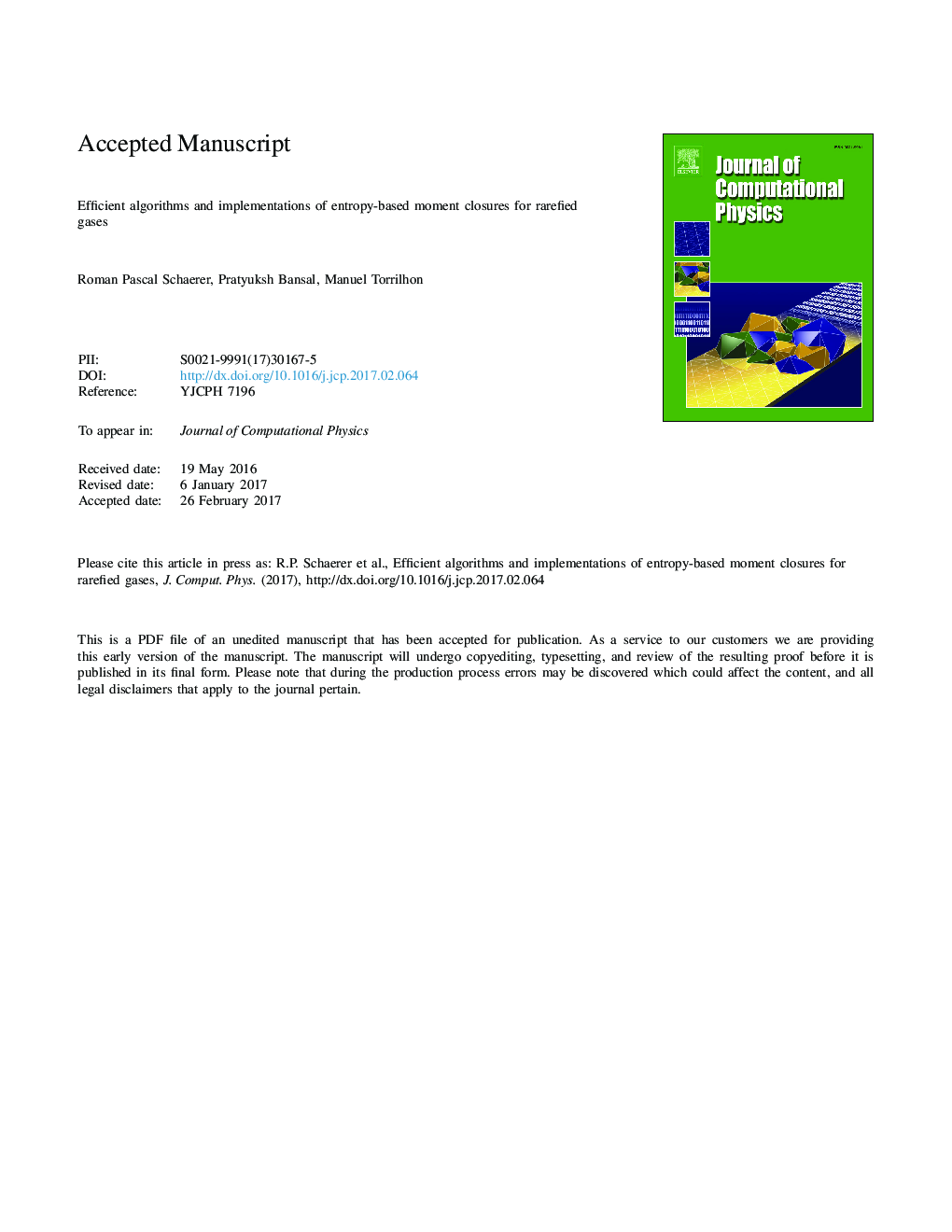| Article ID | Journal | Published Year | Pages | File Type |
|---|---|---|---|---|
| 4967288 | Journal of Computational Physics | 2017 | 28 Pages |
Abstract
We present efficient algorithms and implementations of the 35-moment system equipped with the maximum-entropy closure in the context of rarefied gases. While closures based on the principle of entropy maximization have been shown to yield very promising results for moderately rarefied gas flows, the computational cost of these closures is in general much higher than for closure theories with explicit closed-form expressions of the closing fluxes, such as Grad's classical closure. Following a similar approach as Garrett et al. (2015) [13], we investigate efficient implementations of the computationally expensive numerical quadrature method used for the moment evaluations of the maximum-entropy distribution by exploiting its inherent fine-grained parallelism with the parallelism offered by multi-core processors and graphics cards. We show that using a single graphics card as an accelerator allows speed-ups of two orders of magnitude when compared to a serial CPU implementation. To accelerate the time-to-solution for steady-state problems, we propose a new semi-implicit time discretization scheme. The resulting nonlinear system of equations is solved with a Newton type method in the Lagrange multipliers of the dual optimization problem in order to reduce the computational cost. Additionally, fully explicit time-stepping schemes of first and second order accuracy are presented. We investigate the accuracy and efficiency of the numerical schemes for several numerical test cases, including a steady-state shock-structure problem.
Related Topics
Physical Sciences and Engineering
Computer Science
Computer Science Applications
Authors
Roman Pascal Schaerer, Pratyuksh Bansal, Manuel Torrilhon,
